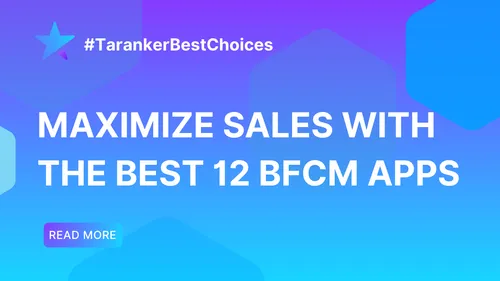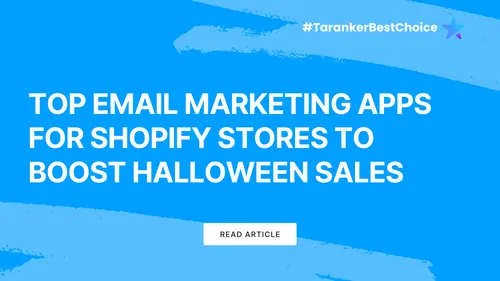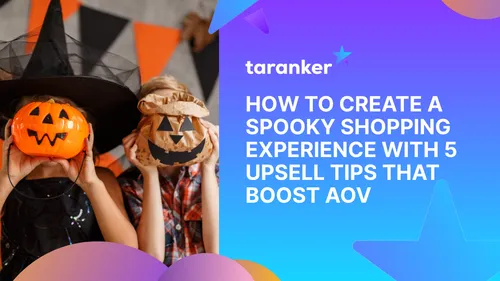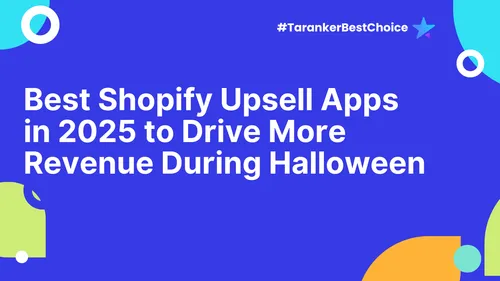Customer acquisition is merely the starting point in the fiercely competitive e-commerce landscape. The real challenge lies in retaining them. Shopify merchants can convert infrequent customers into loyal brand advocates by fostering long-term relationships through strategic loyalty initiatives. In this blog, we’ll explore proven loyalty strategies tailored for Shopify stores. We'll help you transform your Shopify loyalty program into a customer magnet, from setup to optimization.

Understanding the Value of Customer Loyalty for Shopify Stores
Customer loyalty is both a sentimental indicator and a source of income for Shopify retailers. Repeat customers are easier to sell to, spend more money on each transaction, and become brand ambassadors. Studies show that a mere 5% increase in customer retention can boost profits by 25% to 95%. (Harvard Business Review)
Prioritizing Shopify customer retention increases the lifetime value of each current customer while reducing marketing expenses related to gaining new ones. When a customer loyalty strategy is properly implemented, casual buyers become loyal customers, and loyalty becomes a long-term investment that yields consistent returns.
Types of Loyalty Programs for Shopify Merchants
Choosing the right loyalty structure is essential.
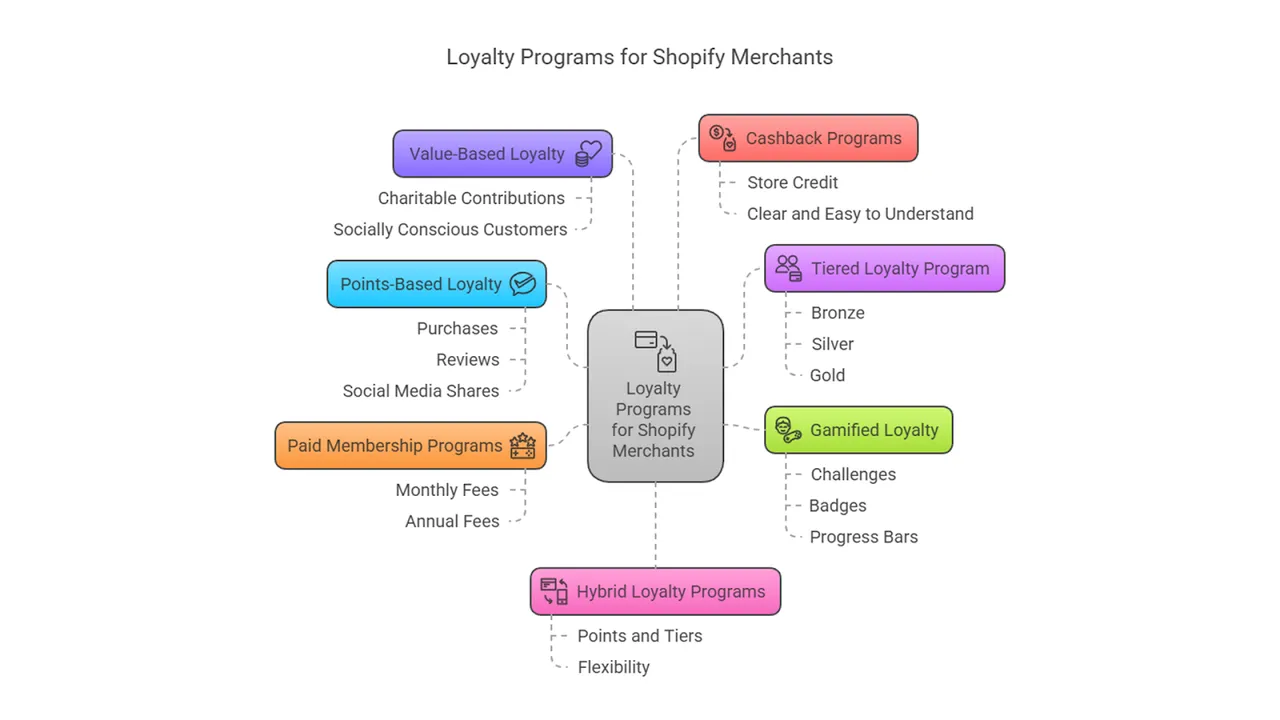
1. Points-Based Loyalty
Customers receive points for purchases, reviews, recommendations, and social media shares. These points can be redeemed for products or savings.
2. Tiered Loyalty Program
Sort your clients into groups (Bronze, Silver, Gold, etc.) according to their spending or activity. The rewards improve with tier level. This promotes recurring business and sustained involvement.
3. Paid Membership Programs
Customers pay monthly or annual recurring fees in exchange for access to premium features like free shipping or access to exclusive content. Amazon Prime is a prime example.
4. Value-Based Loyalty
Reward clients by making charitable contributions on their behalf. Socially conscious customers are drawn to this emotionally charged model.
5. Cashback Programs
Return a portion of the purchase price as store credit. Customers looking for a good deal find cashback models appealing because they are clear and easy to understand.
6. Gamified Loyalty
Use game-like features like challenges, badges, and progress bars. This increases engagement and appeals to users' innate motivation.
7. Hybrid Loyalty Programs
To offer flexibility and serve various client segments, combine several components, such as points and tiers.
Setting Up a Loyalty Program on Shopify: Step-by-Step Guide
Implementing a loyalty program in your Shopify store doesn’t have to be a complex process. Follow these steps:
Step 1: Choose a Loyalty App
Shopify has several top-rated loyalty apps:
-
Nector.io – A powerful, all-in-one loyalty, referrals, and reviews platform designed specifically for Shopify merchants. Nector.io enables seamless program setup, advanced personalization, and deep integration with your store’s ecosystem.
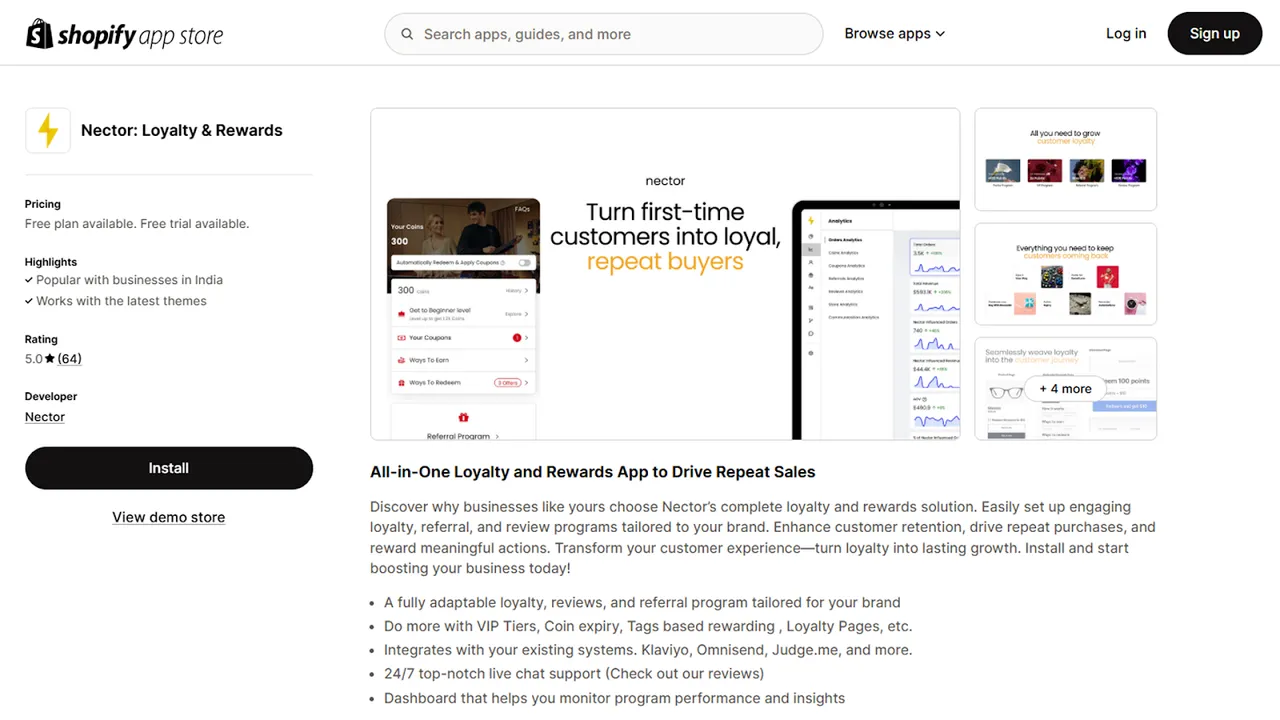
- Yotpo Loyalty & Rewards – Great for combining reviews and rewards.
-
Smile.io – Known for ease of use and robust features.
Step 2: Install and Integrate
Install your chosen app via the Shopify App Store. Most apps come with guided onboarding for seamless integration with your storefront.
Step 3: Configure Program Rules
Define what actions earn rewards such as sign-ups, purchases, referrals, reviews and assign point values accordingly. For tiered loyalty programs, establish thresholds for each tier.
Step 4: Design the Experience
Customize your loyalty widget or dashboard to match your brand aesthetic. Ensure it’s mobile-friendly and easy to navigate.
Step 5: Launch and Promote
Announce your program via email, social media, and in-store banners. Consider offering a sign-up bonus to encourage adoption.
Personalization and Segmentation in Loyalty Programs
Generic loyalty programs don’t cut it anymore. Today’s consumers expect personalized rewards tailored to their behavior and preferences. Here's how to do it:
-
Customer Segmentation: Use customer segmentation based on demographics, purchase frequency, order value, and product preferences. This enables targeted offers that feel tailor-made.
-
Leverage Purchase History: Send exclusive deals on frequently bought items or accessories related to previous purchases.
-
Customer Tagging: Shopify allows you to tag customers based on actions or behaviors. Use this to trigger custom rewards or messages.
-
Behavioral Triggers: Set up automated workflows that reward users for specific behaviors like cart recovery, birthdays, or anniversaries.
When done right, personalization increases not just engagement but also the perceived value of your Shopify loyalty program.
Best Practices for Maximizing Loyalty Program Engagement
Launching a program is just the beginning. To keep your customers engaged, apply the following tactics:
-
One-Click Enrollment: Make joining effortless. Use a single-click sign-up from the checkout or account creation page.
-
Exclusive Rewards: Offer members-only perks like early access to sales or limited-edition products.
-
Milestone Rewards: Celebrate important milestones (first purchase, birthdays, spend thresholds) with bonus points or gifts.
-
Visual Progress Bars: Progress bars gamify the experience and encourage continued engagement by showing how close users are to the next reward.
-
Program Transparency: Clearly communicate how the program works, how to earn, and how to redeem. Confusion leads to disengagement.
Mistakes to Avoid When Designing Loyalty Programs
Even the best intentions can backfire. Watch out for these common loyalty program mistakes:
-
Overcomplicated Mechanics - Avoid confusing structures that require a manual to understand. Simplicity wins.
-
Hidden Programs - If customers don’t know your program exists, it doesn’t matter how great it is. Promote it prominently across all channels.
-
Low-Value Rewards - If the rewards don’t match customer effort or spending, they’ll lose interest. Keep the value proportional and desirable.
-
Aggressive Expiration Policies - Points that expire too quickly can frustrate users. Balance urgency with fairness.
-
Ignoring Customer Feedback - Listen to your users. Their suggestions can highlight gaps and opportunities for loyalty program improvement.
Integrating Loyalty with Referrals and Reviews
Integrating your Shopify loyalty program with referral and review systems amplifies its impact.
-
Referrals: Reward users for bringing in friends or family. Word-of-mouth remains one of the most trusted forms of marketing.
-
Reviews: Offer points or perks in exchange for product reviews. This builds social proof and increases conversion rates.
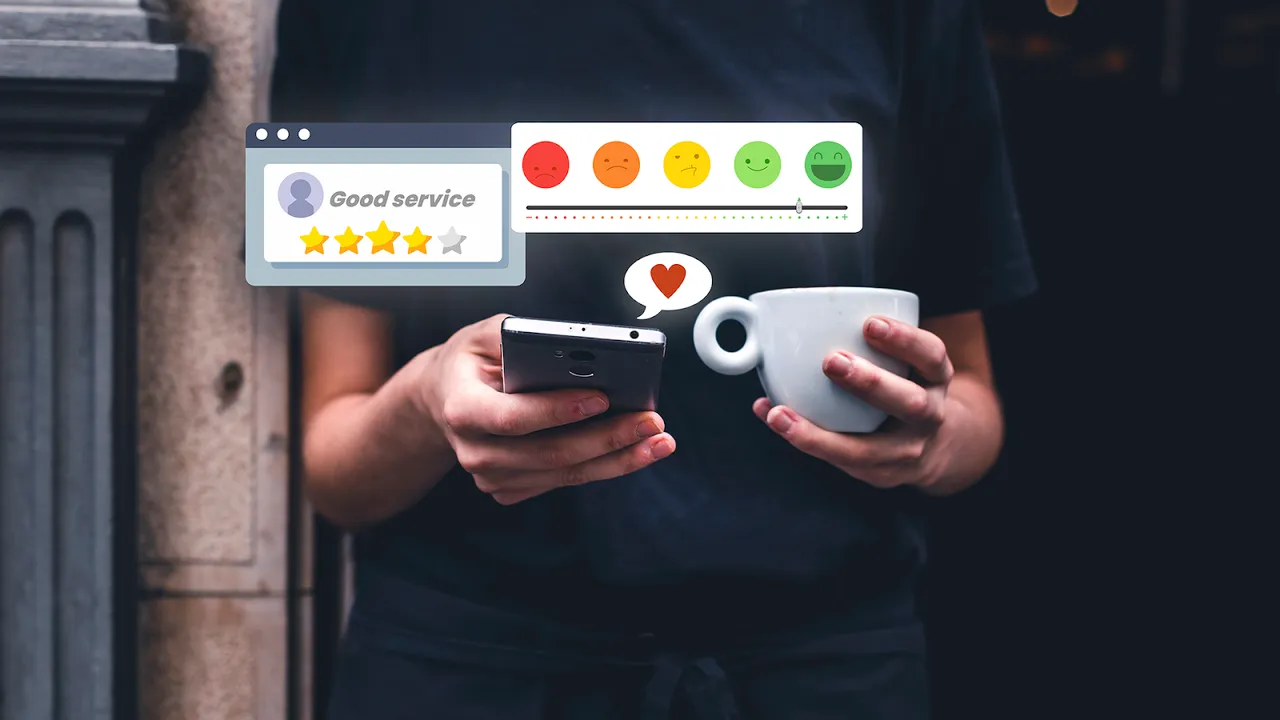
- Unified Dashboard: A unified dashboard brings together loyalty, referrals, and reviews in one centralized interface, making it easier to manage and analyze customer engagement. This consolidated view saves time, reduces tool fragmentation, and ensures a consistent user experience across all reward-based interactions.
Use platforms like Nector.io that combine loyalty and referrals in a single, seamless interface, enabling a more integrated loyalty strategy.
When customers can earn rewards from multiple engagement paths, they’re more likely to become brand advocates.
Measuring the Success of Your Loyalty Program
Launching a loyalty program is a great start, but how do you know it’s actually working? The success of any customer loyalty strategy lies not just in its setup but in its impact over time. That’s why tracking the right metrics is essential.
-
Repeat Purchase Rate
One of the first indicators to watch is your repeat purchase rate. Are customers coming back after their first order? If the number is climbing, it means your program is doing its job, encouraging repeat behavior. This metric gives you a direct look at how your loyalty strategy influences buying habits.
-
Redemption Rate
How often are customers actually using their rewards? A high redemption rate suggests that customers find your rewards valuable and accessible. A low rate might indicate that the rewards are too difficult to earn, too confusing to use, or simply not appealing.
-
Customer Lifetime Value (CLV)
Another critical metric is customer lifetime value (CLV). When customers engage with your loyalty program and keep coming back, their lifetime value should increase. The goal of your program is to not just retain customers, but to grow the revenue you earn from each over time.
-
Program ROI
Compare the total revenue generated from loyalty program participants against the costs of running the program including rewards, software, and promotional efforts. If you're seeing a healthy return, your strategy is on the right track.
-
Segmented Analytics
Evaluate performance across different customer segments to fine-tune offers and strategies.
Evolving Your Loyalty Program Based on Customer Feedback
A great Shopify loyalty program is never static. It should grow alongside your brand and customer expectations.
-
Collect Customer Feedback: Use surveys, NPS scores, or direct feedback to gather insights on what’s working and what’s not.
-
A/B Test Reward Structures: Experiment with point values, reward thresholds, or tier benefits to find the optimal configuration.
-
Benchmark Against Competitors: Stay competitive by monitoring what others in your niche are offering. Use this data to identify gaps or differentiate.
-
Iterate Frequently: Don’t wait for an annual review. Make small, regular improvements to ensure continued relevance and effectiveness.
Final Thoughts
In the crowded world of e-commerce, brand loyalty is your ultimate competitive advantage. For Shopify merchants, implementing a strategic, well-personalized Shopify loyalty program can transform first-time buyers into passionate, repeat customers.
Whether you’re just getting started or looking to level up your current program, the key is to stay customer-centric, data-informed, and always open to evolution.

